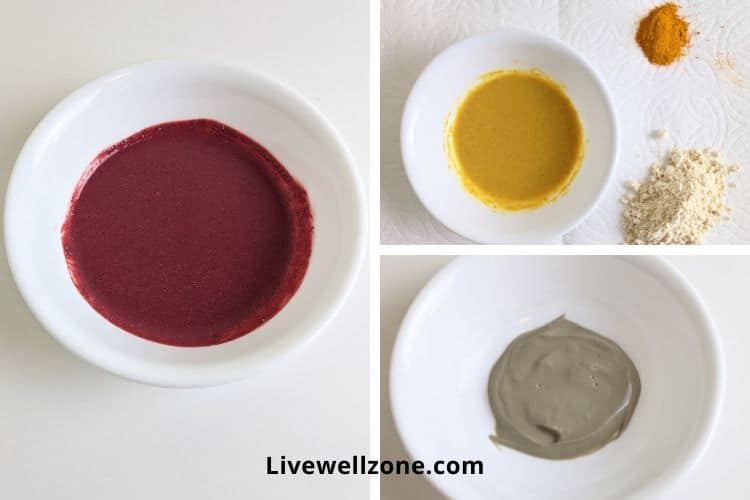
One of the best ways to enhance your at-home skincare routine is to use a nourishing and balancing homemade face mask after steaming.
Applying a mask after steaming can be very beneficial because steaming helps to soften the top layer of the skin. As a result, it’s easier for the mask to be absorbed. Ingredients like clay, aloe vera, yogurt and others can be used to encourage exfoliation, hydrate the skin and reveal brighter skin.
In this article I’m sharing a variety of DIY, post-steam face masks that you can use for different skin types, including acne-prone, dry, mature and sensitive skin.
Let’s get right to it!
DIY CLAY FACE MASKS TO USE AFTER STEAMING
Using a bentonite, rhassoul or kaolin clay mask after a facial steam is a great way to get rid of dirt, excess oil and toxins that are clogging up pores. Not only are clay masks great for shrinking pimples, but they also help to exfoliate and re-nourish the skin with the minerals.
Here are 3 simple yet effective clay masks that you can whip up at home.
1. Anti-Acne Bentonite (Aztec) Clay Mask
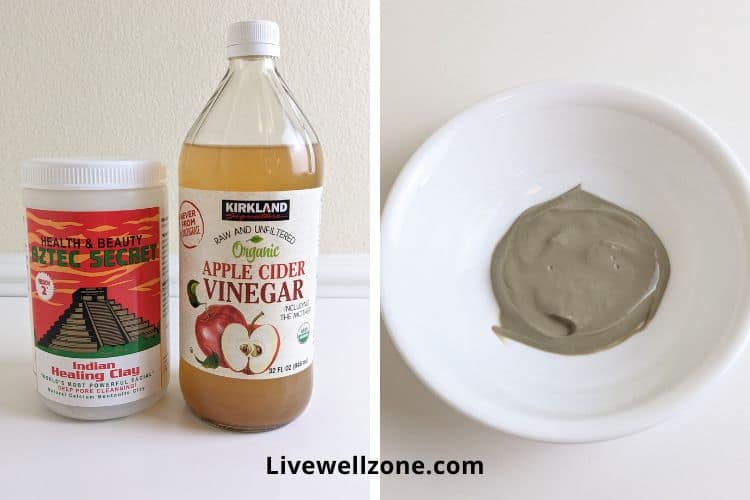
With its strong absorbent properties, bentonite clay is the go to for oily, acne-prone skin. This recipe uses the Aztec brand of bentonite clay along with ACV (apple cider vinegar). The ACV serves two main roles:
- it’s the best medium for dispersing bentonite without getting a clumpy mask.
- ACV’s acidic pH helps to make the resulting mask less alkaline, which is generally better for the skin (bentonite is a more alkaline clay with a pH around 9)
Ingredients
2 tablespoons apple cider vinegar
2 tablespoons bentonite clay
Instructions
1. Combine the ingredients in a glass bowl. NOTE: since bentonite clay tends to clump, it helps to add the clay slowly into the ACV. You can try adding a tablespoon (or less) at a time and stirring, then adding in more. Some days I can get away with mixing all of it at once and getting smooth finish…but other days, I’m not so lucky!
2. Apply the mixture to clean skin using your fingers or a makeup brush.
3. Leave on for about 10 – 15 minutes (the mask will start to harden but shouldn’t be 100% dry).
4. Rinse off with warm water.
2. Rhassoul Re-Mineralizing Mask
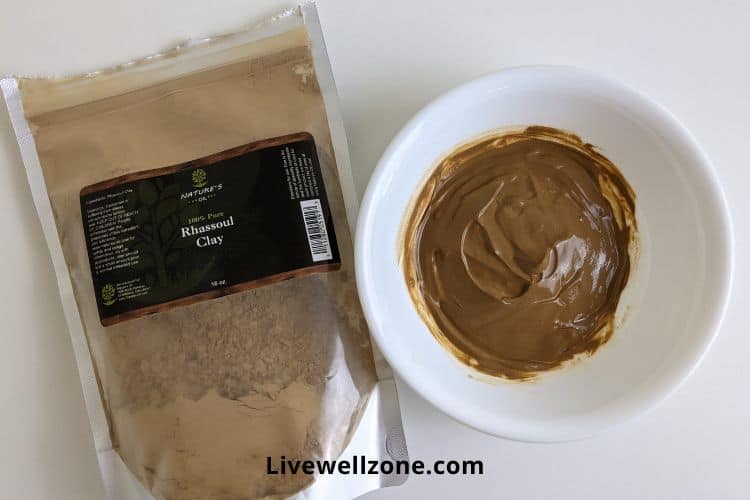
Rhassoul clay is packed with trace minerals – such as silica, magnesium and calcium – that are beneficial for skin health. It is also less absorbent (i.e. less drying) than bentonite clay, making it a more suitable option for dry or mature skin that is in need of reviving.
Ingredients
3 tablespoons rhassoul clay
2 tablespoons filtered water
Instructions
1. Combine the rhassoul clay and water in a glass bowl. Mix with a silicone spatula.
2. Apply on clean skin using your fingers or a makeup brush.
3. Leave on for 10 – 15 minutes.
4. Rinse off with warm water.
3. Balancing Kaolin Clay Mask
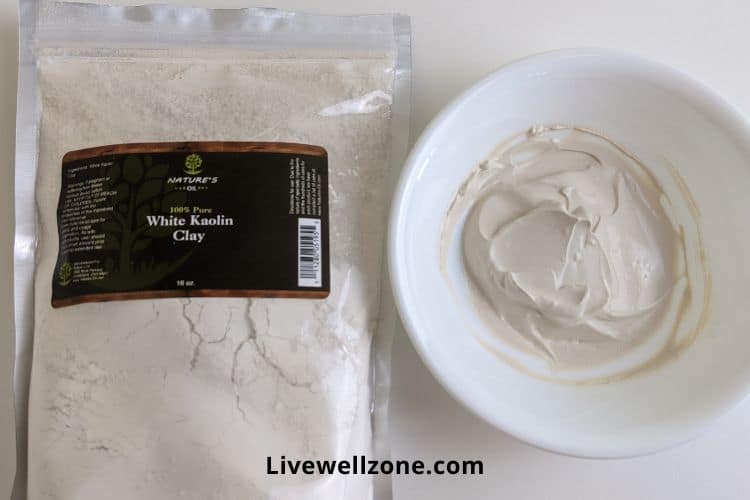
If you have super dry or sensitive skin, then kaolin clay is the one clay you should consider using. It’s the least absorbent of the clays, so it is less likely to strip your skin of its natural oils.
Ingredients
2 tablespoons white kaolin clay
1 tablespoon + 1 teaspoon filtered water
Instructions
1. Combine the kaolin clay and water in a glass bowl. Mix with a silicone spatula.
2. Apply on clean skin using your fingers or a makeup brush.
3. Leave on for about 10 – 15 minutes.
4. Rinse off with warm water.
NATURALLY HYDRATING AND EXFOLIATING MASKS TO USE AFTER A FACIAL STEAM
1. Yogurt and Maca Mask
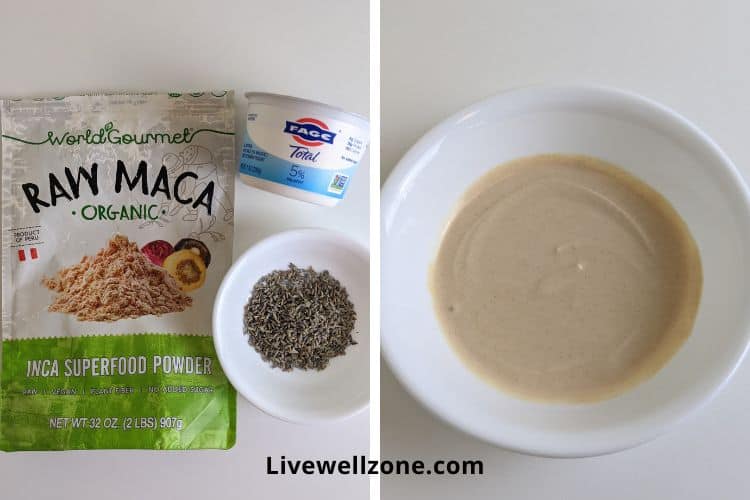
This mask uses Greek yogurt, a natural source of lactic acid which supports exfoliation. The yogurt is also rich in probiotics that help to support overall skin health.
In addition, there’s herbal tea which soothes the skin and acts as a mild astringent. In the picture above I show lavender, but you could also use chamomile, mint or a combination of all three in a tea.
Lastly, this mask also uses maca root, an adaptogenic herb that is slowly popping up in skincare products. Maca contains antioxidants (including vitamins C and E) as well as B-vitamins and fatty acids.
Ingredients
1 tablespoon Greek yogurt (5% fat)
1 teaspoon freshly brewed herbal tea (cooled down to room temperature)
½ teaspoon raw maca powder
Instructions
1. Combine all ingredients in a bowl and use a whisk to blend until the maca is well incorporated.
2. Apply to the skin using your fingers or a makeup brush.
3. Leave on for 15 to 20 minutes.
4. Rinse off with lukewarm water.
2. Goat’s Milk and Honey Mask
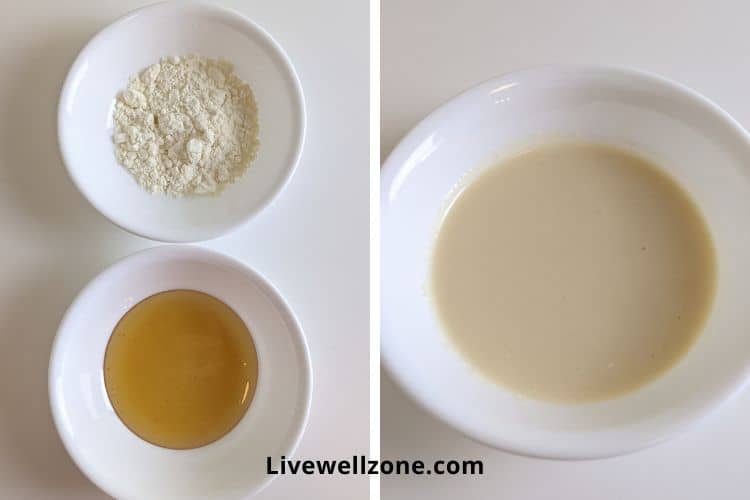
If you’re looking for extra moisturization, then this mask is for you. The ingredients include:
- Goat’s milk: contains lactic acid which encourages exfoliation; rich in fatty acids that soothe inflammation and soften the skin (source).
- Honey: a natural humectant that draws moisture to the skin.
Ingredients
2 tablespoons honey
1 teaspoon water
2 tablespoons powdered goat’s milk
Instructions
1. Mix the honey and water until fully incorporated.
2. Add in half of the goat milk. Mix well. Add in the remaining half of goat milk and mix again.
3. Apply to clean skin using a makeup brush.
4. Leave on for 15 minutes.
5. Rinse off with lukewarm water.
3. Beetroot, Honey and Kaolin Clay Mask
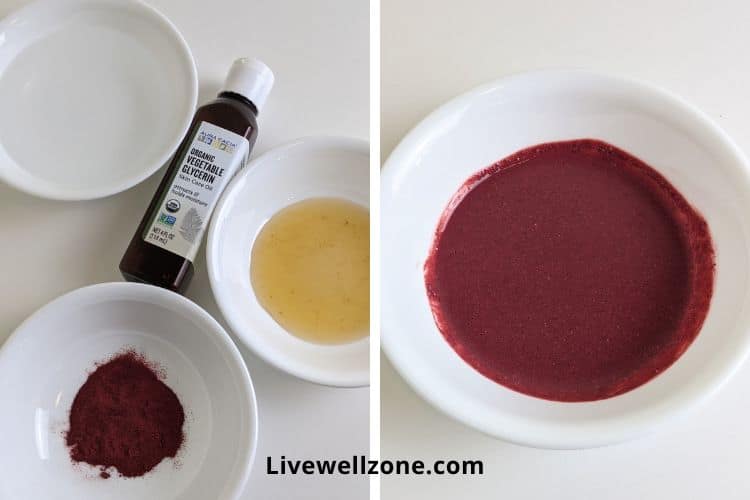
This mask brings together glycerin and honey, which are both natural humectants that attract moisture to the skin.
In addition, you get the gentle detoxification benefits of kaolin clay combined with the antioxidant and anti-inflammatory power of beetroot powder.
NOTE: beetroot powder is concentrated so I suggest starting with a small amount (1/2 tsp) to see how your skin reacts to it. If necessary you can adjust the recipe to use more as you get used to it.
Ingredients
½ tsp glycerin
2 tsp honey
1 tbsp water
1/2 tsp – 1 tsp beet powder
1 tablespoon kaolin clay
Instructions
1. Mix the glycerin, honey, water and beet powder with a whisk until smooth.
2. Add in the clay 1 teaspoon at a time until it’s well combined into the mixture.
3. Use a foundation brush to apply the mask to clean skin.
4. Leave it on for 15 minutes.
5. Rinse off with warm water.
4. Turmeric and Chickpea Mask
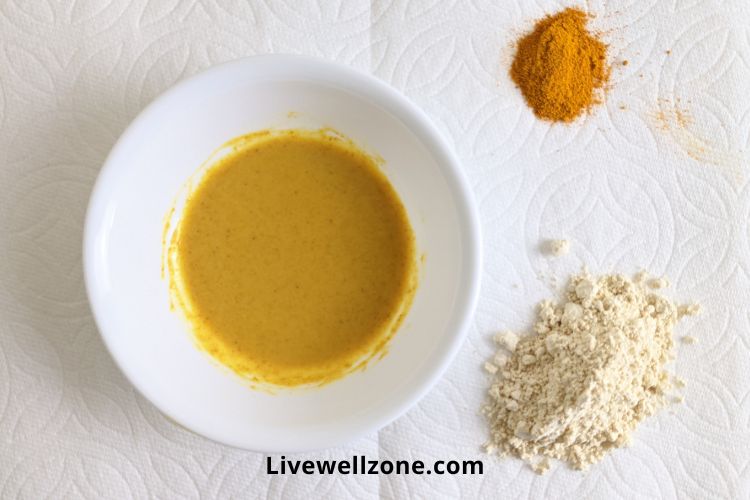
Turmeric’s antioxidant and anti-inflammatory properties make it one of the best natural ingredients for fighting acne, hyperpigmentation and free radical damage. When combined with chickpea flour, which contains skin-friendly minerals like zinc, a turmeric mask helps to balance oily and acne-prone skin.
Ingredients
1 tablespoon chickpea flour
1/4 teaspoon turmeric powder
1 tablespoon distilled water
Instructions
1. Whisk all the ingredients together in a bowl.
2. Apply to clean skin.
3. Leave on for 10 – 15 minutes.
4. Rinse off with warm water.
5. Soothing Aloe Vera and Honey Mask
An aloe vera-based face mask is one of the absolute best ways to naturally restore moisture to the skin after steaming. Although it is suitable for all skin types, an aloe mask it is particularly helpful for dry, mature and sensitive skin.
Combined with honey, this mask provides a double dose of hydrating and soothing ingredients.
Ingredients
1 tablespoon fresh aloe vera gel (make sure to blend the gel to a liquid consistency)
1 1/2 teaspoon raw honey
Instructions
1. Mix the aloe and raw honey in a bowl until well combined.
2. Apply to clean skin using a makeup brush.
3. Leave on for 10 to 15 minutes.
4. Rinse off with warm water.
ADDITIONAL TIPS ON WHAT TO DO AFTER STEAMING YOUR FACE
After steaming, your skin is ready for exfoliation, a mask, a toner and other skincare products. The choice of which products to use ultimately depends on what works best for your skin.
With that said, here are some general tips of how to take care of your skin after steaming and the order in which to apply products:
- Exfoliate: although you can use a scrub after steaming, remember that the skin is also in a very delicate state at this particular time. Personally, I prefer to skip exfoliation and use a mask that contains exfoliating ingredients. However, if absolutely must use a manual scrub, go for a very gentle one – such as oat flour, rather than a sugar scrub.
- Apply a mask: you can use a DIY mask or a store bought mask that matches your skin type and skincare goals (such as improve acne, hydrate the skin, getting a healthy glow and so on). Also, using a mask that contains natural exfoliators (goat milk, yogurt and so on) means you can skip the exfoliating step altogether.
- Use a toner: a gentle, alcohol-free toner like rose water, lavender tea or mint hydrosol is great for rebalancing the skin. Toning is definitely not a must, but it does add to the whole pampering experience!
- Apply a serum: use a nourishing serum to rehydrate the skin.
- Moisturize: for your finishing act, be sure to apply a moisturizer or carrier oil that locks in moisture.
RELATED QUESTIONS ABOUT THE BEST MASK TO USE AFTER FACE STEAMING
Can we apply coconut oil after face steaming?
You can use coconut oil after steaming your face by incorporating it into a homemade face mask or by using it as a moisturizer. However, do keep in mind that coconut oil isn’t always a good choice for acne-prone skin because it may aggravate breakouts.
CONCLUSION
Using a face mask after facial steaming is not only beneficial for your skin, but it’s a great way to pamper yourself.
I hope the masks in this article help to boost your glow up routine!
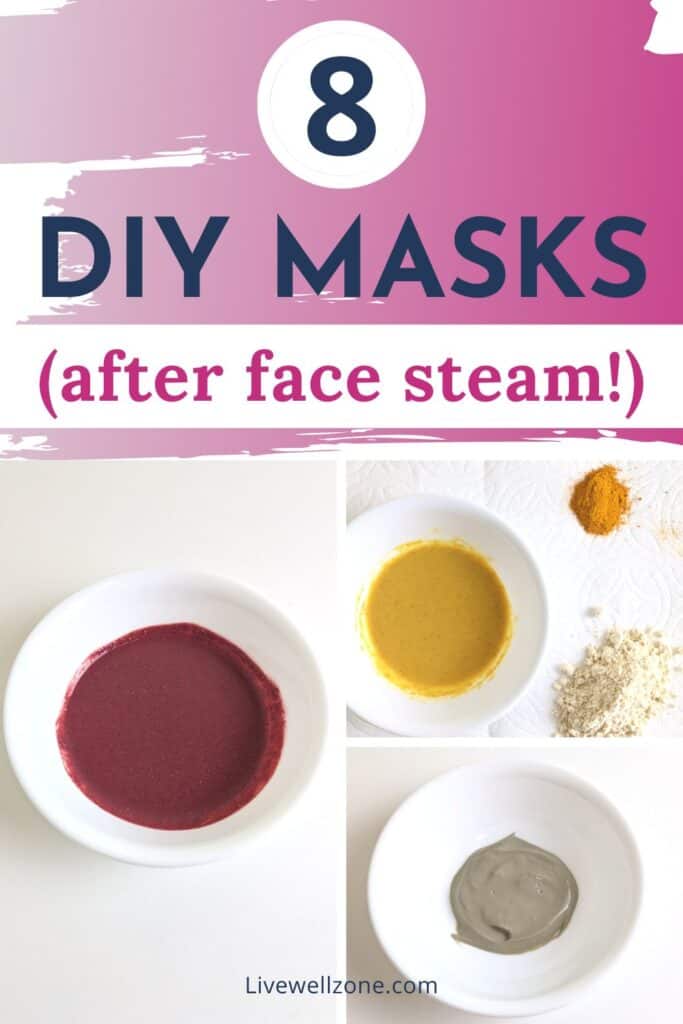
You Might Also Enjoy:
What Can I Add To My Facial Steam? Top Herbs, Essential Oils and More
How to Use Herbs for Face Steaming
What To Do Before And After Steaming Your Face: A Complete Guide
Kaolin Clay Mask for Dry Skin: Benefits and Tips For A Healthy Glow
5 Things To Know Before Using Clay for Dry Skin (+ Bonus Recipe)

